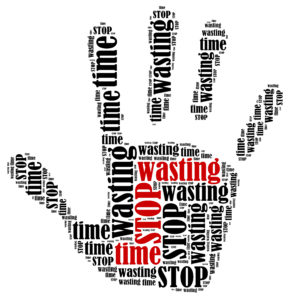 Success and profits come from devoting resources to activities that create value for which customers are willing to pay and minimizing resources devoted to everything else. If you are serious about improving results, you need to take a good hard look at the time you and your employees spend on the following activities:
Success and profits come from devoting resources to activities that create value for which customers are willing to pay and minimizing resources devoted to everything else. If you are serious about improving results, you need to take a good hard look at the time you and your employees spend on the following activities:
- Planning – especially the portions so familiar they barely need planning and those so unfamiliar that traditional detailed planning can only create fiction and the illusion of control. Planning is important, but plans are not a business outcome. Stop worshipping your plans and measuring success with checked off tasks. Instead, start asking employees how they know they will finish on time.
- Wandering – operating without a clear process. If you don’t have a clear method, you won’t take the shortest path. Pick the best path before you enter the woods! This applies to large tasks as well as the next half hour spent alone at your desk.
- Generalizing – building enterprise wide solutions to address one mistake or underperforming employee. It is so much easier to just train everyone than to figure out why things aren’t working as desired! But you’ve got to stop doing it! You can’t solve a problem without eliminating its cause.
- Controlling – establishing rules, forms, formats, procedures, and other controlling structures in an effort to improve performance. That will only work if a lack of controls and structures is the root cause of disappointing performance.
- Reporting – justifying time and money expended, even though it creates zero value and prevents next to zero problems. Reporting is traditional, hard to avoid, and the most insidious of all Treadmill Verbs™! You can report forever. There is no way to know when you are done!
- Reviewing – looking something over without any idea whether the goal is to ensure strategic value, comprehensibility, completeness, accuracy, or the absence of typos and grammatical mistakes.
- Documenting – because if we write it all down, everyone will finally get it and there will be no excuse for not doing it! Sure. I used to believe that. It doesn’t work.
- Discussing – so everyone feels heard. And not manipulated? A fair, transparent decision-making process is a far better choice.
- Guessing – responding to vague requests and writing email messages without a clear understanding of your audience. Everyone must learn to stop and create clarity on the fly! Ask clarifying questions!
- Waiting – especially for busy people who aren’t getting back to you—and never will because it isn’t a lack of time keeping them from getting back to you! More likely, it’s a lack of clarity about what you need and/or what you requested.
- Shuffling – paper, priorities, To Do lists, and plans instead of moving something forward and creating value for which customers are willing to pay.
- Meeting – without clear expectations of what must be different when you are done.
- Spinning – creating deliverables and assignments to justify time and money expended. A favorite example is assignments dished out at the end of meetings. If you can dream up an assignment or two, people will feel better about all the time they spent in the meeting. Not! At least not for long. Not once they get back to their desks and realize their To Do lists grew with tasks having little strategic value.
- Perfecting – perfectionism is costly. Too often the last 20% adds zero value. If a tree falls in the forest and nobody is there to hear it, does it make a sound? Philosophers may still be debating that one, but here is a far easier one: If your finishing touches are discernible to no one but you, do they create value?
- Redoing – because you didn’t create the clarity of purpose and process that would have allowed doing it right the first time.
If you think the above activities provide value, try adding them to the next customer invoice and see how eager your customers are to pay for them! These are all prime activities of The B Zone – The Efficiency Gap Between Production and Leadership. Dismantle and replace them by insisting that all activities create value for which customers are willing to pay. Find that value or find a better way to spend your time.
![]()
This article first appeared on Forbes, August 28th, 2017.


Comments are closed.